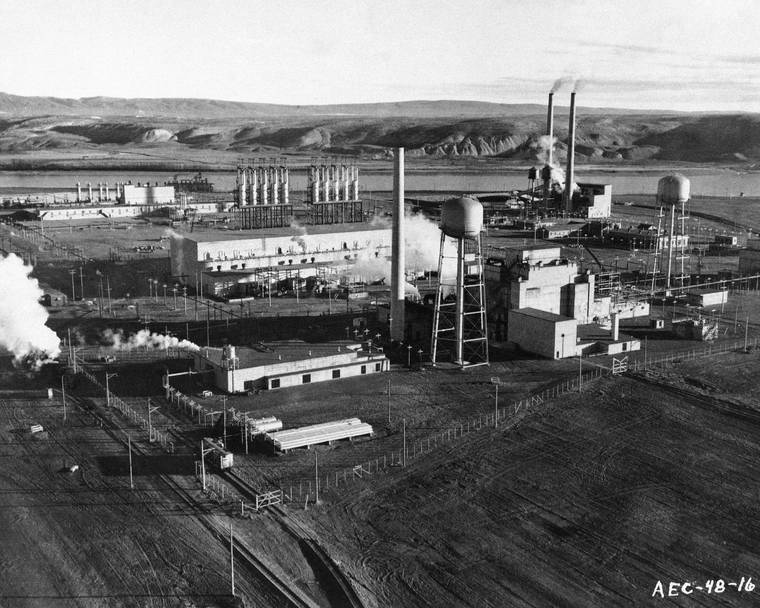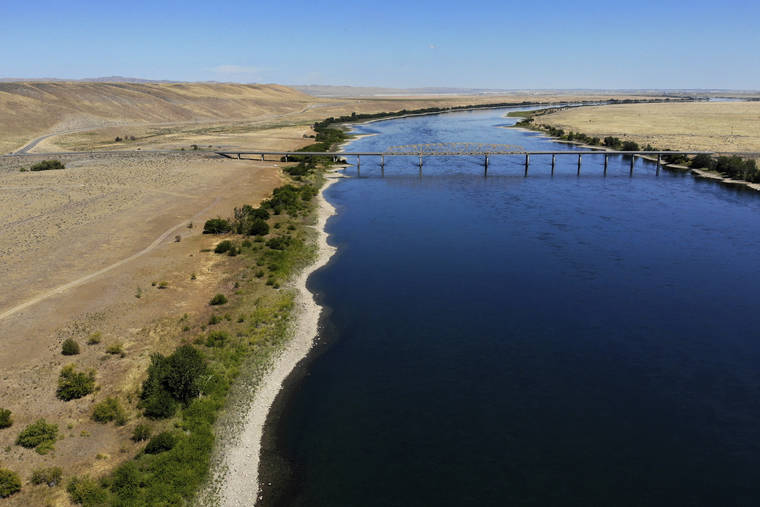Wildlife now roam where US once forged its deadliest weapons






DENVER From a tiny Pacific island to a leafy Indiana forest, a handful of sites where the United States manufactured and tested some of the most lethal weapons known to humankind are now peaceful havens for wildlife.
DENVER — From a tiny Pacific island to a leafy Indiana forest, a handful of sites where the United States manufactured and tested some of the most lethal weapons known to humankind are now peaceful havens for wildlife.
An astonishing array of animals and habitats flourished at six former weapons complexes — mostly for nuclear and chemical arms — because the public and other intrusions were banned for decades.
When they became obsolete, the government converted them into refuges under U.S. Fish and Wildlife Service management, but the cost is staggering. The military, the U.S. Department of Energy and private companies have spent more than $57 billion to clean up the heavily polluted sites, according to figures gathered by The Associated Press from military and civil agencies.
And the biggest bills have yet to be paid. The Energy Department estimates it will cost between $323 billion and $677 billion more to finish the costliest cleanup, at the Hanford Site in Washington state where the government produced plutonium for bombs and missiles.
Despite the complicated and expensive cleanups, significant contamination has been left behind, some experts say. This legacy, they say, requires restrictions on where visitors can go and obligates the government to monitor the sites for perhaps centuries.
“They would be worse if they were surrounded by a fence and left off-limits for decades and decades,” said David Havlick, a professor at the University of Colorado at Colorado Springs who studies military-to-wildlife conversions. “That said, it would be better if they were cleaned up more thoroughly.”
Researchers have not examined the health risks to wildlife at the cleaned-up refuges as extensively as the potential danger to humans, but few problems have been reported.
Most skeptics agree the refuges are worthwhile but warn that the natural beauty might obscure the environmental damage wreaked nearby.
The military closed the sites to keep people safe from the dangerous work that went on there, not to save the environment, said Havlick, author of a book about conversions, “Bombs Away: Militarization, Conservation, and Ecological Restoration.”
“It’s not because the Department of Defense has some ecological ethic,” he said.
Critics say Rocky Mountain Arsenal in Colorado illustrates the shortcomings of a cleanup designed to be good enough for a refuge but not for human habitation.
Roughly 10 miles from downtown Denver, the arsenal was once an environmental nightmare where chemical weapons and commercial pesticides were made. After a $2.1 billion cleanup, it was reborn as Rocky Mountain Arsenal National Wildlife Refuge, with 24 square miles (61 square kilometers) of idyllic prairie.
But parts of the refuge remain off-limits, including specially designed landfills where the Army disposed of contaminated soil. Eating fish and game from the refuge is forbidden. Treatment plants remove contaminants from groundwater to keep them out of domestic wells.
“So there’s a huge downside to converting it into a wildlife refuge, because it allows residual contamination to remain in place,” said Jeff Edson, a former Colorado state health official who worked on the cleanup.
The Army is still struggling with cleaning up Jefferson Proving Ground in Indiana, part of which became Big Oaks National Wildlife Refuge .
Soldiers test-fired millions of artillery rounds there, some made of armor-piercing depleted uranium. Its radiation isn’t strong enough to be dangerous outside the body, but its dust is a serious health risk if inhaled or swallowed, the U.S. Environmental Protection Agency says.
Depleted uranium fragments are scattered on the firing range among 1.5 million rounds of unexploded shells, which makes cleanup dangerous and expensive.
The Army told the Nuclear Regulatory Commission it could cost $3.2 billion to clean the area for unrestricted use. Its latest plan calls for waiting 20 years in hopes that better, less expensive technology emerges or the unexploded shells degrade to a safe level.
Rocky Flats National Wildlife Refuge , a former nuclear weapons plant northwest of Denver, opened to hikers and cyclists last September, but some activists question whether it’s safe.
A $7 billion cleanup concentrated on the central area where workers assembled plutonium triggers for nuclear warheads, and that area remains closed.
The refuge was created on the perimeter buffer zone. State and federal officials say it’s safe, but skeptical activists filed a lawsuit saying the government didn’t test it carefully enough.
Hanford — where the cleanup has already cost at least $48 billion and hundreds of billions more are projected — may be the most troubled refuge of all.
Parts of Hanford’s buffer zone are open to visitors, but cleanup costs for an area where contaminated waste is stored are soaring.
Washington state officials are worried that the Trump administration wants to reclassify millions of gallons of wastewater from high-level radioactive to low-level, which could reduce cleanup standards and costs.
The Energy Department told the state it has no current plans to change the classification. State officials say they want legally binding assurances.
Mark Madison, the Fish and Wildlife Service’s historian, said if agency officials believed the sites were unsafe for the public, he said, they would not work there.
“They’re there all the time,” Madison said. “They’re not going to want to be in a place with chemical pollution or radiation problems.”


